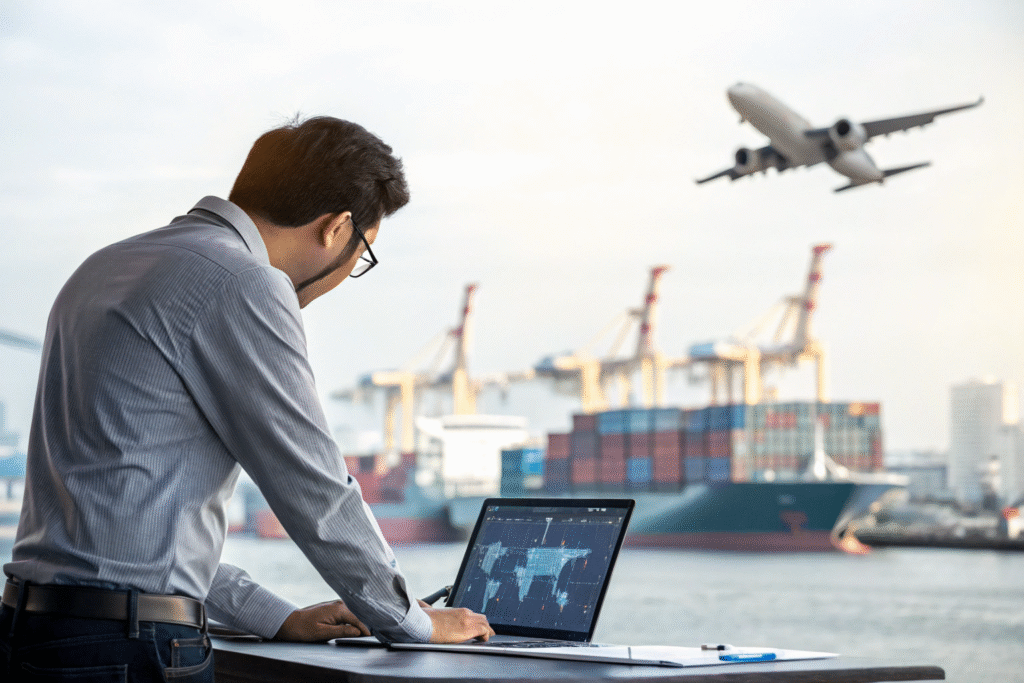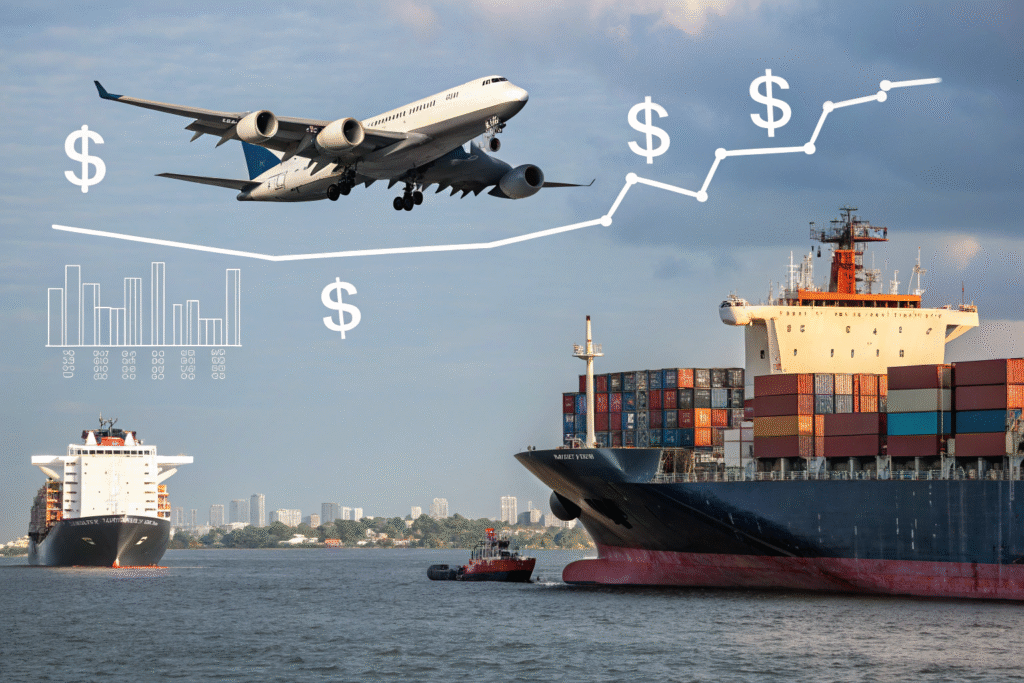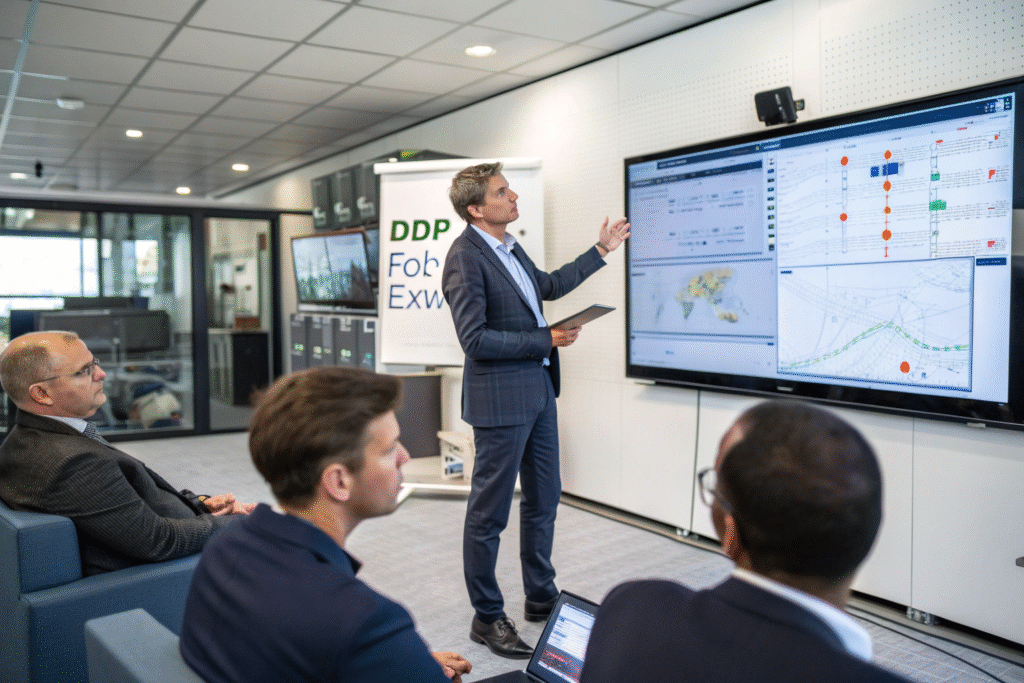New tariffs introduced in 2025 are already transforming how businesses approach international shipping. Rising import duties, reclassified HS codes, and tighter customs scrutiny are pushing freight costs up—even if base shipping rates seem stable. If you're moving bulk goods from Asia to the U.S. or Europe, ignoring these trends can put your margins at risk.
This guide reveals how to forecast international shipping costs more accurately in the evolving tariff environment. We’ll break down the variables you need to monitor, tools that help, and practical tips for brands sourcing from China.
At GeeseCargo, we help clients ship smart by factoring in duties, Incoterms, documentation, and real-time carrier adjustments. In a volatile landscape like 2025, logistics planning is no longer about just “rate shopping”—it’s about full-scope forecasting.
What Cost Elements Are Most Affected by Tariff Changes?

How Do Tariffs Influence Total Landed Costs?
Tariffs can increase your total landed cost by 20–60%, depending on your product and destination. For instance, a $50,000 shipment of electric scooters from China to the U.S. may face a 25% duty plus 5% customs fees and inspection charges—bringing the final cost close to $65,000.
The U.S. International Trade Commission’s calculator and ImportYeti offer good starting points to estimate tariffs by HS code. However, they don’t factor in newer Section 301 tariffs or local handling charges. That’s where expert freight forwarding comes in.
What Extra Charges Get Triggered by Duty Adjustments?
Besides direct tariffs, many countries impose additional fees once your goods fall into certain duty brackets. These include:
| Cost Element | Triggered by | Avg % Impact |
|---|---|---|
| Merchandise Processing Fee | All U.S. imports | 0.21–0.34% |
| Anti-Dumping Duties | Certain China-origin goods | 20%–90% |
| Port Congestion Surcharges | Peak shipping windows | $75–$500 |
| Handling & Documentation Fees | Customs compliance | Varies |
Customs brokerage services like Flexport often bundle these fees into quotes. At GeeseCargo, we break them down in detail so clients can isolate what’s avoidable.
How Can Importers Predict Cost Swings in 2025?

Which Tools Help Forecast Freight & Tariff-Linked Charges?
To improve forecasting, use a layered approach:
- HS Code Classifier: Tools like TariffTel suggest accurate duty brackets.
- Real-Time Freight Indexes: Platforms like Freightos Baltic Index track rates per route.
- Tariff Monitoring: Subscribe to updates from USTR or CBIC India.
- Carrier Surcharge Bulletins: Carriers like Maersk, Hapag-Lloyd post monthly updates on surcharges.
We also recommend building custom spreadsheets with macros that allow your team to plug in updated tariff % values against forecasted container or airfreight rates.
Can Past Cost Trends Be Used in 2025?
To some degree, yes—but only if you include tariff volatility in the model. For example, air freight to the U.S. from Shenzhen typically costs $5.50/kg during off-season. But if your product suddenly falls under a 25% duty, that price per kg becomes irrelevant without full landed cost projections.
At GeeseCargo, we help importers maintain historical rate logs adjusted with tariff flags, so we can forecast more accurately than relying solely on carrier quotes.
Which Freight Modes Are More Sensitive to Tariff Shocks?

Is Air Freight More Prone to Sudden Cost Increases?
Yes. While ocean freight often locks in monthly contract rates, air freight is highly elastic. In high-demand seasons like Q4 or when tariffs surge on fast-moving goods, air cargo carriers apply Priority Handling Surcharges, sometimes doubling base rates overnight.
If you’re shipping tariff-sensitive products like smartwear or high-end accessories, air freight spikes can cripple budgets. That’s why many importers now favor ocean+DDP options—longer, but easier to forecast.
Does Ocean Freight Absorb Tariff Volatility Better?
To some extent. Sea freight offers more predictable base rates, especially with FCL (Full Container Load). However, the indirect costs caused by tariffs—like demurrage delays due to customs holds—can still ruin forecasts.
Forwarders like GeeseCargo mitigate this by offering bonded container clearance in ports like Los Angeles and Rotterdam. That lets you defer tariffs, unload faster, and avoid “surprise” charges from carrier storage fees. See how bonded warehouse options work under U.S. law.
How Can You Adjust Shipping Strategy for Predictability?

Should You Switch to FOB or EXW to Control Duty Exposure?
In many cases, yes. Using FOB (Free on Board) or EXW (Ex Works) Incoterms puts control of customs and tariff payments in your hands. It also allows you to negotiate better rates or route goods through alternative ports.
For example, a client shipping yoga apparel from Ningbo to Florida saved 11% in total cost by shifting from DDP to FOB and managing the customs clearance locally with our support. Learn more about Incoterms differences.
Can Consolidation Reduce Duty Per Item?
Absolutely. By consolidating goods into a single shipment, especially with mixed SKUs that fall under lower HS codes, your average duty per unit can drop dramatically. This strategy also reduces per-item overhead on fees like customs inspection, fuel surcharges, and handling.
We offer weekly LCL consolidation from Shenzhen, Ningbo, and Xiamen with routing into bonded warehouses in California and New Jersey—ensuring clients never overpay just because of fragmented shipping.
Conclusion
Forecasting shipping costs in the new 2025 tariff landscape means more than just tracking freight rates. You need to account for evolving duties, classification changes, surcharges, and customs risks. With the right data, tools, and freight partner, these uncertainties can be turned into predictable supply chain strategies.
At GeeseCargo, our job is to give you full visibility—whether you're shipping ocean freight on FOB terms or managing DDP air cargo with layered customs duties. Let’s help you stay ahead of cost surges and move smarter in this volatile market.
You can reach Ben Zhu at benzhu@geesecargo.com for a custom logistics forecast tailored to your product line and destination country.









